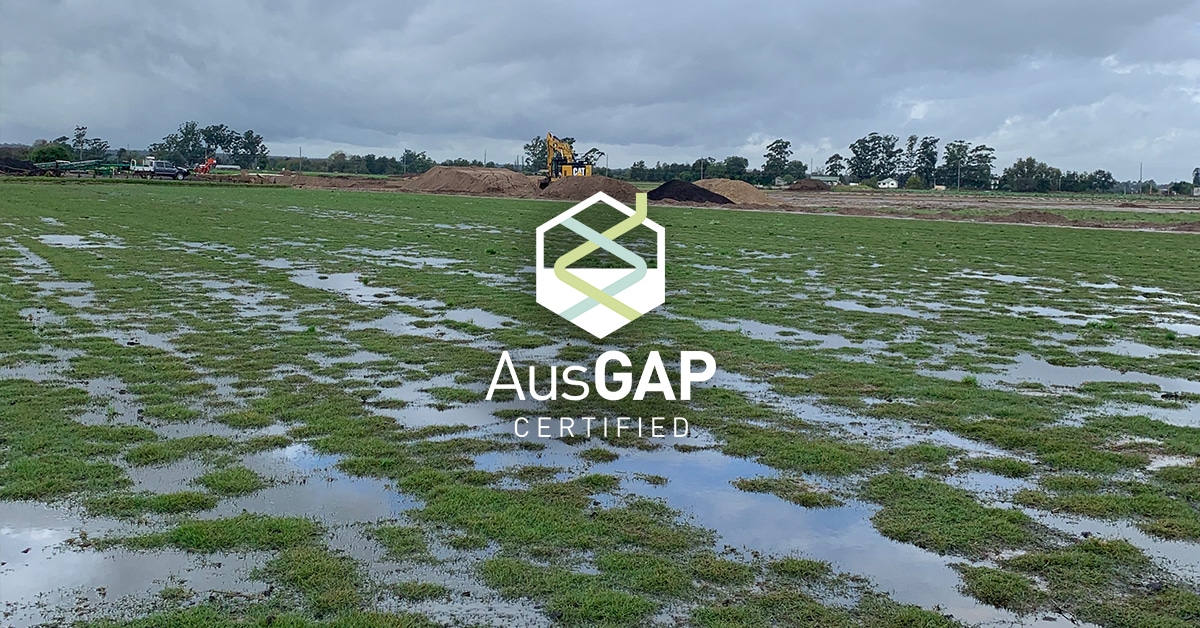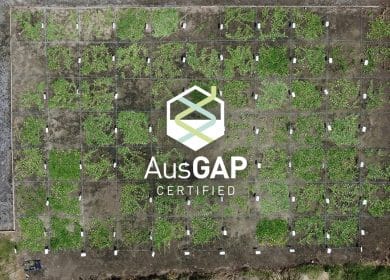Flood effects on soil and turf health

The effects of flooding are diverse and impact many aspects of people’s lives when affected. The east coast of Australia has seen some of the worst flooding to hit those areas with a lot of farm and urban land affected. Damage on sports turf facilities and turf farms can vary depending on depth and duration of submergence, species, and water temperature. Read on to find out more about the effects of flooding on turfgrass and soil health.
There are many factors determining the state of the turf after flood waters recede. This includes the age of the turf, age of the soil profile, topography, and irrigation. However, it is also important to take action depending on the type of flood damage and the varying effects it may have.
What is the effect of flooding on soil health?
Good soil structure is vital to turf crops and facilities as it aids aeration and drainage. Flooding can destroy soil structure by disrupting the aggregates. Furthermore, flooding can leech nutrients out of the soil as water runs offsite or drains through the ground. Alternatively, nutrient loss can occur through the conversion of plant available nutrients to a gaseous form that is lost to the atmosphere (Meurant et al., 2012). These conditions – even if turf looks healthy after flood waters recede – can lead to reduced crop yields, increased cost in fertilisers used, and delays in crop planting.
Flooded soils may also encounter extensive loss of microorganisms that are essential to nutrient cycling. This includes the loss of a specific microorganism fungi that occupy root systems and create a zone where nutrients can be taken up easily by the turf (Ippolito et al., 2019). When this activity is interrupted nutrients aren’t able to be cycled, essential for proper crop growth.
What is the effect of flooding on turf health?
Some turfgrasses have better submersion tolerance than others. A study observing the submersion tolerance of warm season varieties concluded that bermudagrass, zoysia and buffalo has exceptional inundation tolerance (Fry et al., 1991). However, this does not mean these grasses are exempt from flood damage. As mentioned, there are multiple factors and situations that determine damage, but there are also different types of flood damage.
The three most common types of flood damage are erosion, submersion injury, and soil deposition.
Erosion:
This form of injury is common when turf facilities, sports of farm, are located near flowing water like rivers or creeks. The fast-flowing water during floods erodes the riverbanks and can encroach and damage facilities.
Submersion Injury:
The extent of the injury is related to the duration of submersion, depth of submergence, and light intensity. The submersion of turf deprives the plant of O2 due the microorganisms and roots using all present o2 within the first few hours of flooding (Meurant et al., 2012). Little can be done to assess the amount of injury from submersion until flood waters subside.
Soil Deposition:
During flooding it is possible for several inches of clay, silt, sand and other debris to be deposited on the turf. This form of injury can occur if the turf remains completely or even partially buried for an extended period of time. The depositing of these elements can also post risks to future drainage of the site (Hartwiger et al., 2000).
How to minimise effects after flood waters recede?
With these multifaceted effects from flooding, it can make turf management difficult. Weed control is an ongoing issue after flooding and is a key component in assisting the recovery of turf. Early control to reduce weeds can assist in the process of turf recovery. Furthermore, renovation of the turf once they have dried out can assist in recover. For example, Hollow coring allows oxygen back into the soil and assists in breaking up the silt layer. Likewise, it is important to keep adequate water up for recovering turf. After flooding turf has weak root systems and dry out quickly, so water is essential for recovery (Hartwiger et al., 2000). Another key aspect to recovery is increasing mowing heights, this reduces further damage to turf while its root systems recover (Neylan et al., 2013).
As discussed there are many determining factors on how turf is affected and how it will recover from flooding. The timing of clean-up is essential ensuring all resources available are used to assist in recovery and minimise downtime. While submersion tolerant turfgrasses alleviate some risk for damage, it is essential to know the damage flooding can cause to turf crops or sports turf facilities, and how to ensure effects are minimised during recovery.
References:
Ippolito, J. (2019, April 16). The dirt on soil loss from the Midwest floods [web log]. Retrieved from https://theconversation.com/the-dirt-on-soil-loss-from-the-midwest-floods-114423.
Neylan, J. (2013). Flood recovery: What we’ve learned in Australia and Thailand. Asian Turfgrass. Retrieved from http://files.asianturfgrass.com/neylan_handout_flooded_courses_thailand_2013.pdf
Hartwiger, C. (2000). Raining, pouring, golf course is flooding. USGA. Retrieved from https://www.usga.org/content/dam/usga/pdf/imported/course-care/000308.pdf
Kozlowski, T. T. (Ed.). (2012). Flooding and plant growth. Acad. Press.


